For those who have traveled around asia be it in Malaysia, China, Thailand and etc, you might come across many versions of “maneki neko” the fortune cat or beckoning cat.
MASCOTS around Japan : Do you own a “Maneki Neko”?
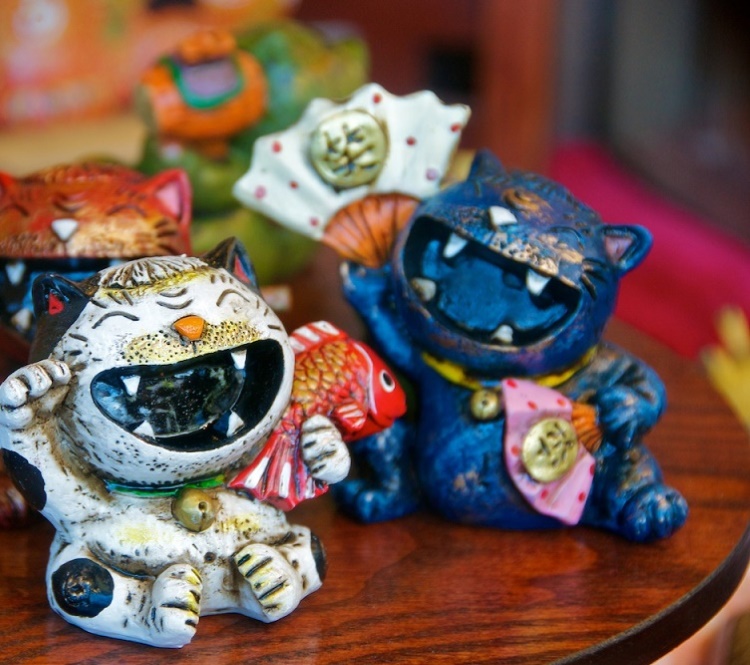
Atami-izu Peninsula Shizuoka Prefecture
For those who have traveled around asia be it in Malaysia, China, Thailand and etc, you might come across many versions of “maneki neko” the fortune cat or beckoning cat. Why is it called the beckoning cat? Certainly not only an adorable cat born of “modern times”, but of a rich history dating as far back as the Edo Era in Japan. Between the 17th century till the mid 19th century. There are few versions in Japan, but these two stands out the most, you decide which is better!
It all began at a little shabby old temple called Gotokuji Temple where a monk cared for the place and a cat. The monk was at his wits end for funds to care for the place as it was falling apart. Then one day the powerful feudal Lord of Hikone – Ii Naotaka and his samurai warriors were by passing its path and they came across a cat who was beckoning them with its paw. They followed the cat into the temple where the monk welcomed them and offered tea to the warriors. Not long after a lightning storm raged outside, Ii Naotaka and his men was grateful to the cat who waved and brought them to take shelter in this temple. Hence this little cat is called the beckoning cat!
Soon after, to show his gratitude the feudal Lord send rice, plots of lands and aids to Gotokuji Temple in the care of the monk and his cat. Gotokuji Temple then flourished from a shabby place into an abundant temple with large grounds. It is also the official resting place of Tairo Ii Naosuke and his family, Ii was one of the most important political figures of the late Edo period of Japanese history. Today “maneki neko” with its trademark paws grace the many pachinkos, shops, household and office work tables as a fortune cat and beckoning cat!
Of Romantic fate or marriage tie. Are you looking for blessings of “en musubi”? Imado Jinja Shrine is located on the east side of the older city of Tokyo known as Asakusa. It is said the Izanagi-no-Mikoto and Izanami-no-Mikoto the Gods where the islands of Japan is birthed are also lovers who are tied to one another. Known as the Gods of en musubi they are enshrined here in Imado Jinja Shrine. Here you will encounter maneki neko everywhere but in pairs. Born of love, many visit to pray for the blessings of en musubi.
Different colour Maneki Neko do have different meaning as well as what they are wearing and holding in their paws also represents individual meaning of the type of blessings expected.
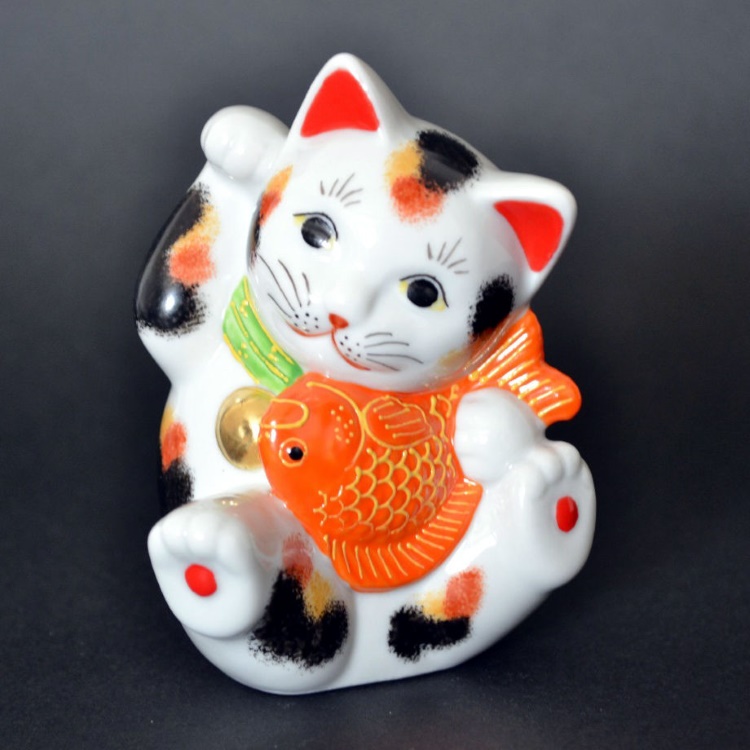
A Japanese Calico Maneki Neko holding a fish.

Gotokuji Temple and the many Maneki Neko!


Antique Black Maneki Neko. The traditional Maneki Neko found in many of the older generations house.
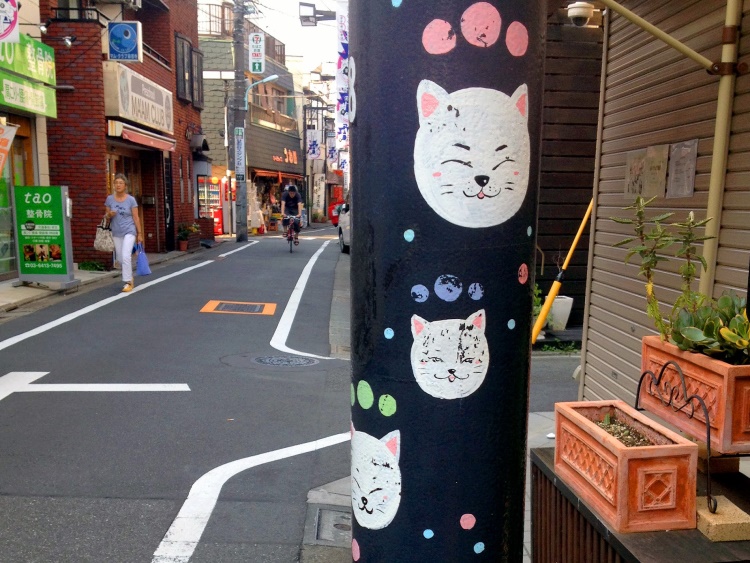
The area around Gotokuji Temple.
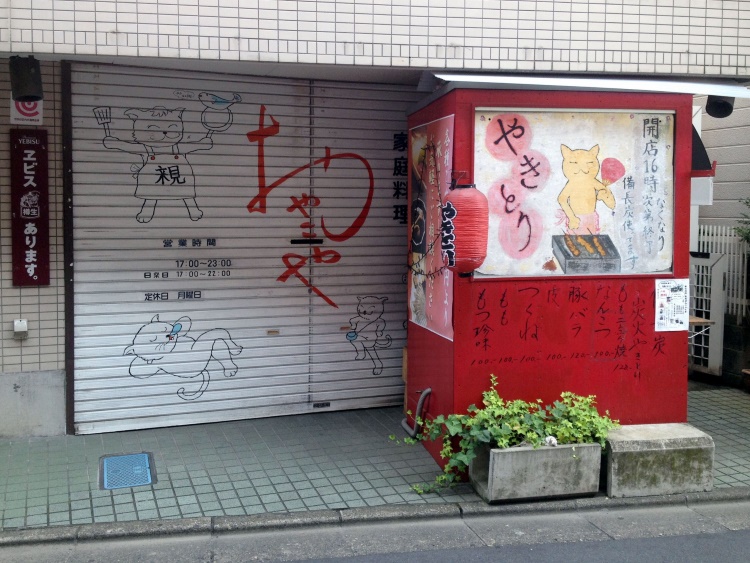
The street around Gotokuji Temple.
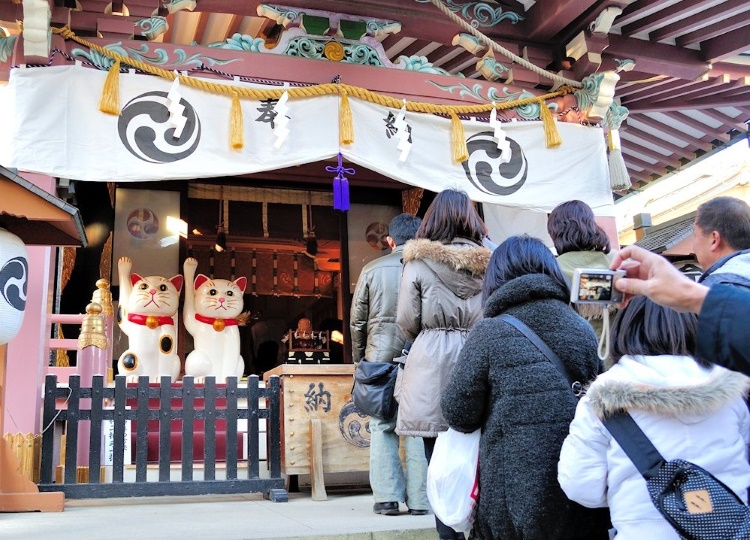
Matchmaking Maneki Neko at Imado Jinja

Emo prayer board

Imado Jinja. Couple Maneki Neko.
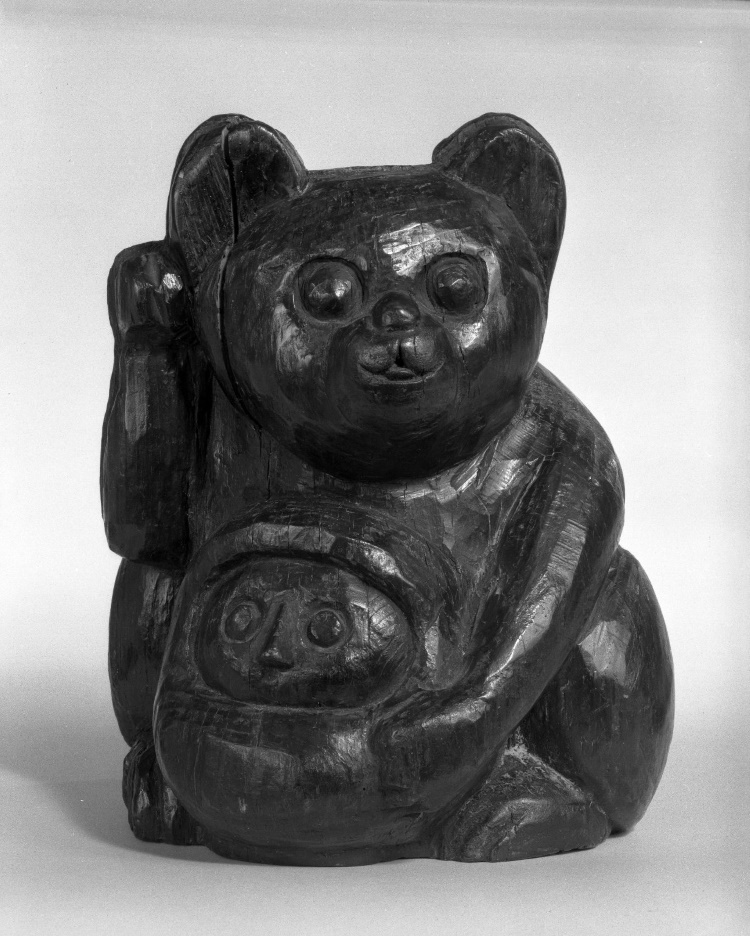
Maneki Neko and Okiagari Koboshi Daruma. From the Edo Period 18th Century. Photo Credit Brooklyn Museum.
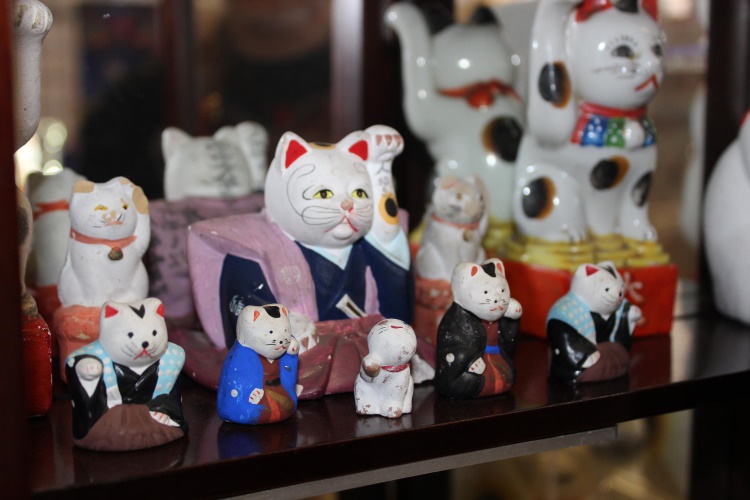
Maneki Neko in traditional Kimono.

Colors plays an important role too. Black Neko for warding off evil, Red Neko is protection from sickness and Gold Neko need no introduction it is for intense wealth and prosperity!




















